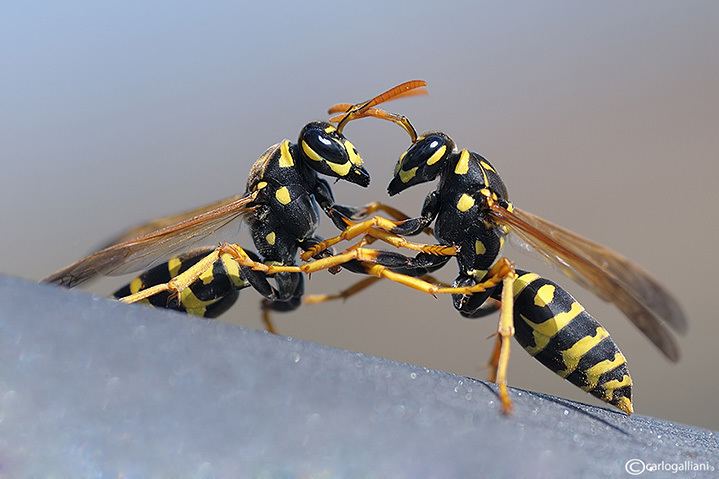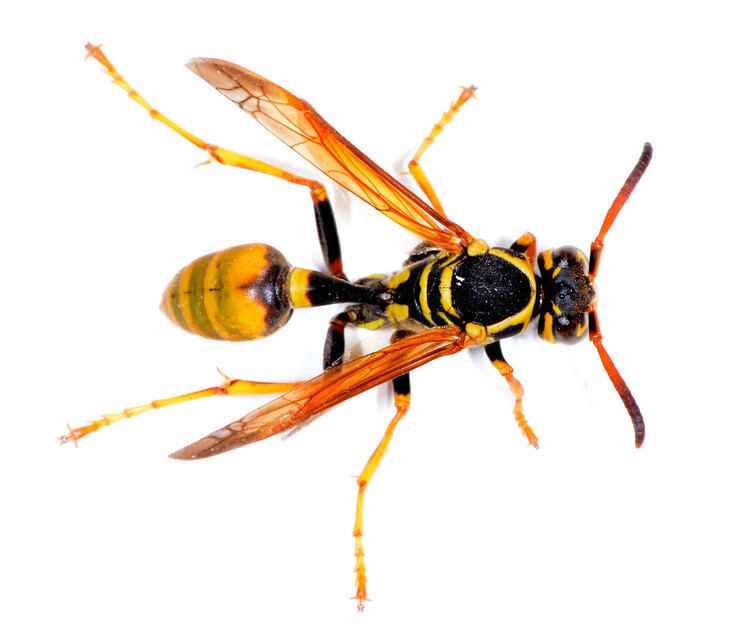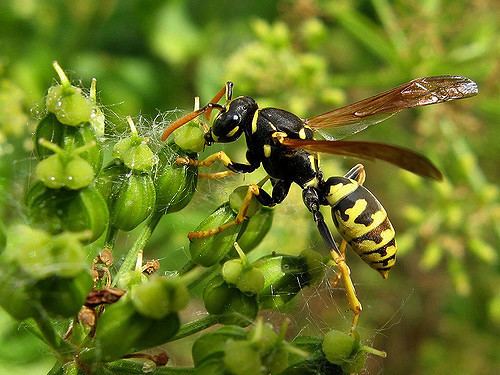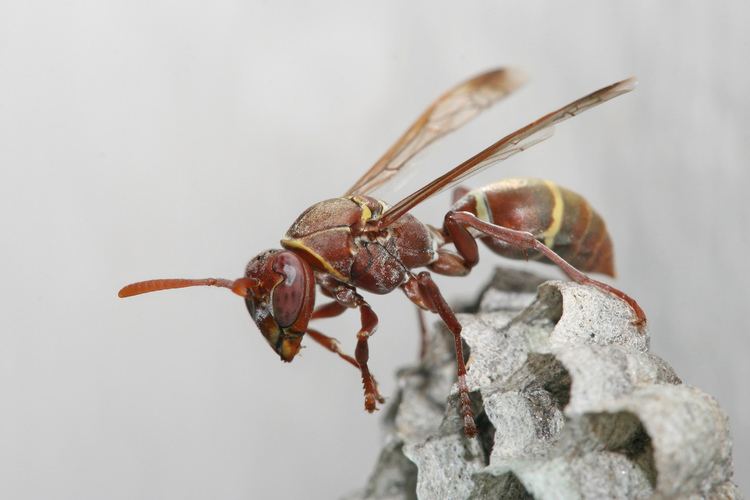Superfamily Vespoidea | Suborder Apocrita Scientific name Polistinae Rank Subfamily | |
 | ||
Lower classifications | ||
Polistinae insect video
The Polistinae are eusocial wasps closely related to the more familiar yellow jackets, but placed in their own subfamily, containing four tribes; with some 1100 species total, it is the second-most diverse subfamily within the Vespidae, and while most species are tropical or subtropical, they include some of the most frequently encountered large wasps in temperate regions. They are also known as paper wasps, which is a misleading term since other wasps (including yellow jackets) also build nests out of paper, and because some epiponine wasps (e.g., Polybia emaciata) build theirs out of mud, nonetheless, the name "paper wasp" seems to apply mostly, but not exclusively, to the Polistinae, especially the Polistini. Many wasps, such as Polistes fuscatus, Polistes annularis, and Polistes exclamans, make their nests out of paper. Polistes annularis suspends its paper nests from cliff overhangs via a pedicel, whose free fatty acids induce the necrophoric response in ants and causes them to avoid the pedicel rather than cross and prey on the nest’s inhabitants. Polistes metricus foragers take off from their nests as if they already know how long their trip is. For short flights, they exit the nest flying horizontally, while for long flights they exit the nest flying straight up into a high altitude before pursuing their direction. Polistine brood cells are arranged in a hexagonal array, similar to the comb structure in a honey bee nest. At least one epiponine species (Brachygastra mellifica) stores honey in the comb, one of the only insects other than bees to store honey.
Contents
- Polistinae insect video
- Polistes sp wasp nest polistinae ninho de vespas
- Colony lifecycle
- Selected species of Polistinae
- References

Characteristics of the Polistinae are:

Polistes sp wasp nest polistinae ninho de vespas
Colony lifecycle

Polistine wasps found colonies in one of two ways. In some species, nests are founded by a small number of reproductive females, possibly a single one. One of the foundresses eventually acquires dominance over the other and is the sole reproducer. The nest is open (not enclosed by an envelope) and contains a single comb.

In the other group, called "swarm-founding", the nest is founded by a large number of workers and a few queens. It is usually protected by an envelope, like a vespine nest.
Selected species of Polistinae
Tribe Polistini

Tribe Mischocyttarini
Tribe Epiponini
Tribe Ropalidiini
